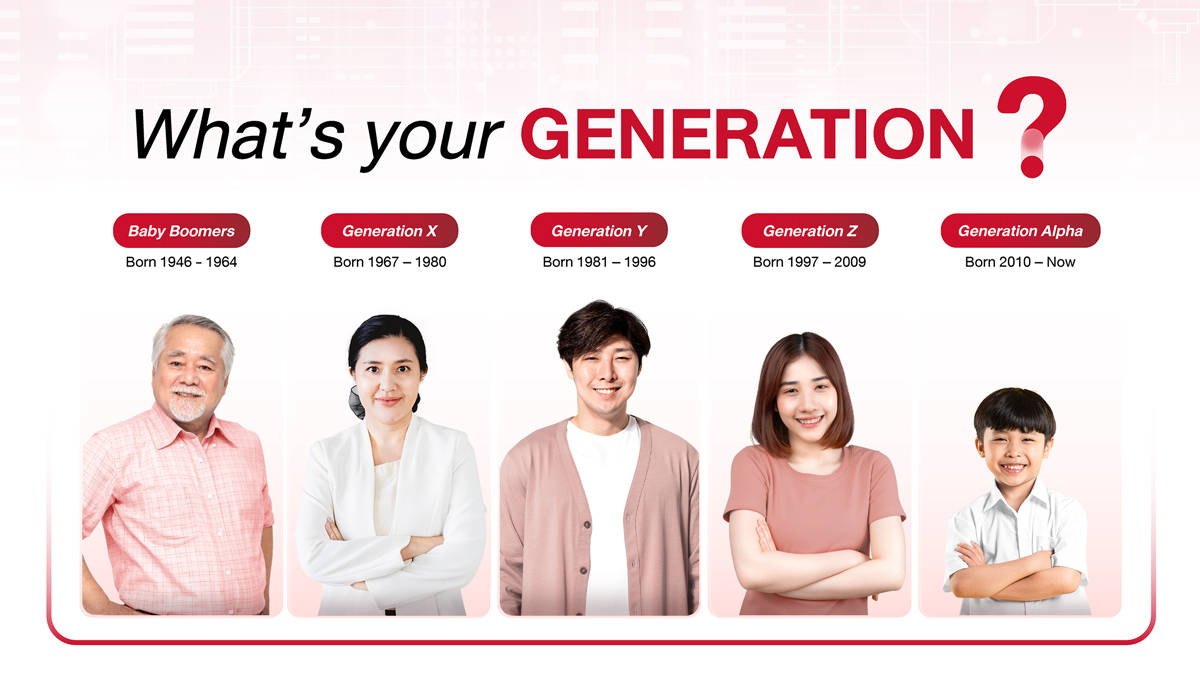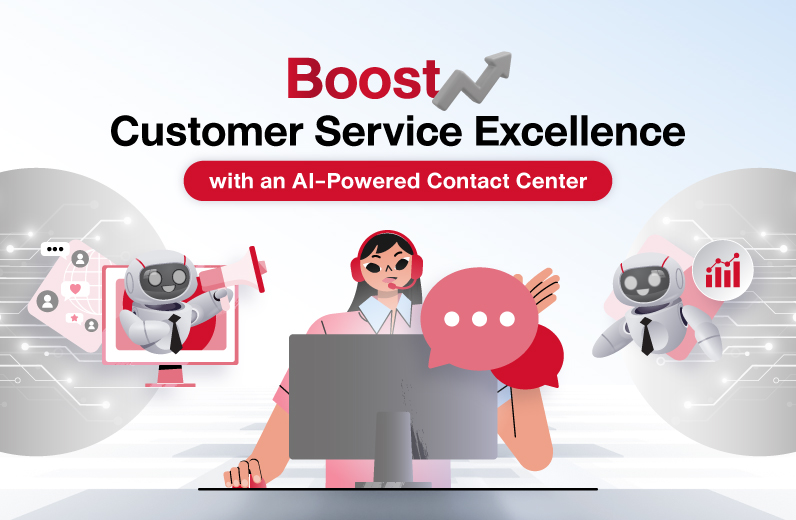Blending Generations: Creating Collaborative Success Across Ages

Presently, organizations unavoidably face the challenge of managing human resources, especially those that have been operating for a long time. These companies typically have managers and executives who have been with them for many years, alongside a new generation of younger employees who join to ensure the company’s ongoing success. This creates a blend of generations within the workplace.
Bringing together talented individuals with the right qualifications to work under pressure can sometimes lead to challenges stemming from generational gaps. The differences between generations result in varying mindsets, attitudes, and communication styles. Therefore, it is necessary to understand each generation’s working behavior and how they think as well as finding ways to work together effectively.

What is Generation and Generation Gap: A Major Issue Every Organization Faces
Generation refers to the categorization of the population based on demographic principles, specifically divided by year of birth. Currently, there are 5 recognized generations as follows:
1.Baby Boomers (Gen B)
Baby Boomers are those born between 1946 and 1964, during the period following World War II. This generation experienced economic expansion and often had many siblings, leading to a childhood characterized by strictness, discipline, and the necessity to be patient while living with limited resources. As a result, they exhibit two contrasting personality traits: a competitive nature stemming from insecurity, fear of loss, or a need for acceptance, and a tendency to share, assist, and focus on community welfare.
Individuals from the Baby Boomer generation approach work with a focus on organizational advancement, viewing themselves as integral to the company's success. They believe that hard work leads to positive outcomes and prioritize long-term stability over short-term financial gains. This results in low job turnover rates and loyalty to large, stable organizations. Baby Boomers tend to consider long-term positions rather than short-term monetary benefits, which makes them less adaptable to change. They prefer structured work environments and command a high level of respect from their colleagues.
In terms of communication, Baby Boomers favor formal, face-to-face interactions over digital exchanges because they seek immediate feedback. When engaging in formal communication, they expect written responses that reflect the same level of formality.
2.Generation X (Gen X)
Generation X are those born between 1967 and 1980 grew during a period of significant societal change, witnessing the end of the Cold War and the rise of computers. With fewer siblings and increased family resources, they developed a strong sense of self-confidence. They tend to be independent and prefer to tackle tasks on their own, focusing on stability and personal advancement. Setting clear life goals is important to them, and they view work as a central aspect of their lives. However, they prioritize work-life balance more than Baby Boomers do.
In the workplace, Generation X requires a clear structure and direction. They like to manage, organize, and analyze tasks as well as work effectively in teams and earn trust from their colleagues.
When it comes to formal communication, they primarily use printed materials and email. In meetings, they prefer those with a clear purpose and dislike long, unfocused discussions.
3.Generation Y (Gen Y)
Generation Y are those born between 1981 and 1996, grew during a time of transition from analog to digital technology. They are skilled at online communication and adept at navigating various social media platforms, preferring communication that is easy, quick, and straightforward. Often referred to as the creative generation, Gen Y embraces change, values new ideas, is open to feedback, and is generally more adaptable than previous generations. However, they also place a high priority on achieving a balance in their lives, distinctly separating work and personal matters.
In the workplace, Generation Y thrives on regular feedback, as they are eager to develop their skills, seek out challenges, and advance in their careers. They are proactive, work well in teams, and desire rapid growth. While they are flexible in their communication styles, they still appreciate clear, concise, and prompt responses.
4.Generation Z (Gen Z)
Generation Z are those born between 1997 and 2009, known as Generation Z, who have grown up in a world dominated by modern technology and convenience. They are highly proficient with various technological tools, including social media, mobile phones, and tablets, making them adapt to searching for information and connecting with others. Generation Z is characterized by their diverse perspectives, quick learning abilities, rapid decision-making, bold self-expression, high self-confidence, and open-mindedness toward different ideas and cultures.
In the workplace, this generation seeks opportunities for personal development and thrives in challenging roles that keep them engaged. They excel at multitasking but tend to have less patience due to their preference for fast-paced environments. Generation Z favors concise communication, often opting for chat programs that allow for quick, straightforward interactions. They typically prefer to keep work communication free from emotions.
5.Generation Alpha (Gen Alpha)
Generation Alpha are those born between 2010 and 2024 belong to a generation that has grown up during a time when technology is at its peak. For them, living without the internet and communication tools is nearly impossible. As a result, they often do not adhere to stable career paths or traditional job structures, instead, they pursue activities that genuinely interest them. They enjoy exploring new experiences on their own and thrive in challenging environments, preferring to avoid monotony. Consequently, they are likely to change jobs frequently and may even venture into entrepreneurship. This group, known as Generation Alpha, will become a significant force in the future, due to their intelligence, sharpness, and familiarity with advanced technology.

Techniques for Teamwork Across Different Generations: Using Empathy, Growth Mindset, and Design Thinking
In this era where organizations have more generational diversity, from Baby Boomers to Generation Z, there exists a "generation gap" characterized by differences in opinions, beliefs, values, and attitudes which can lead to conflicts and complicated communication. To ensure smooth collaboration among all parties, it is necessary to understand and be flexible.
The key to closing this gap lies in fostering empathy, finding common ground to solve problems, and adjusting perspectives in presenting ideas in new formats, which requires effort from both sides. Recognizing and appreciating each other's differences can help establish an organizational culture that values and accepts diverse perspectives.
By understanding the characteristics and viewpoints of each generation, we can enhance our communication and collaboration. It is the organization's responsibility to create opportunities for employees of all ages to engage in joint activities, share conversations, and genuinely listen to one another's perspectives.
transcosmos recognizes the importance of managing generational diversity, which is why we organizes workshops and team-building activities to foster understanding, strengthen relationships, and bridge the generational gap within the organization. Regardless of how different their thoughts will be, everyone shares a common goal to build a strong and sustainable organization.





